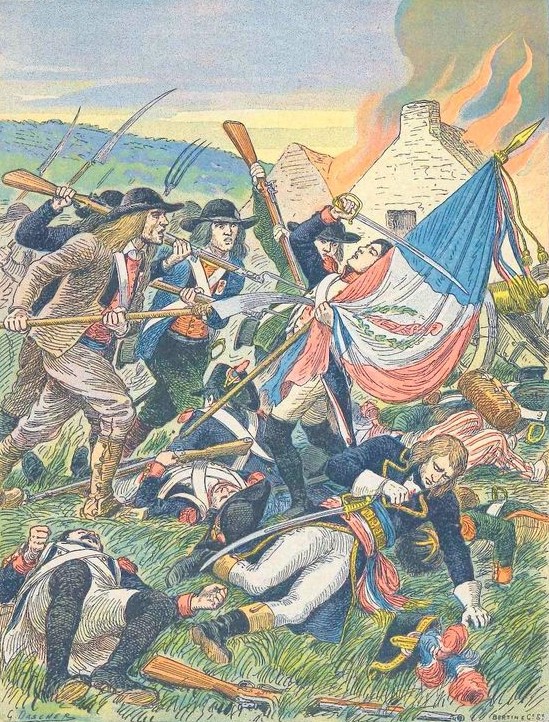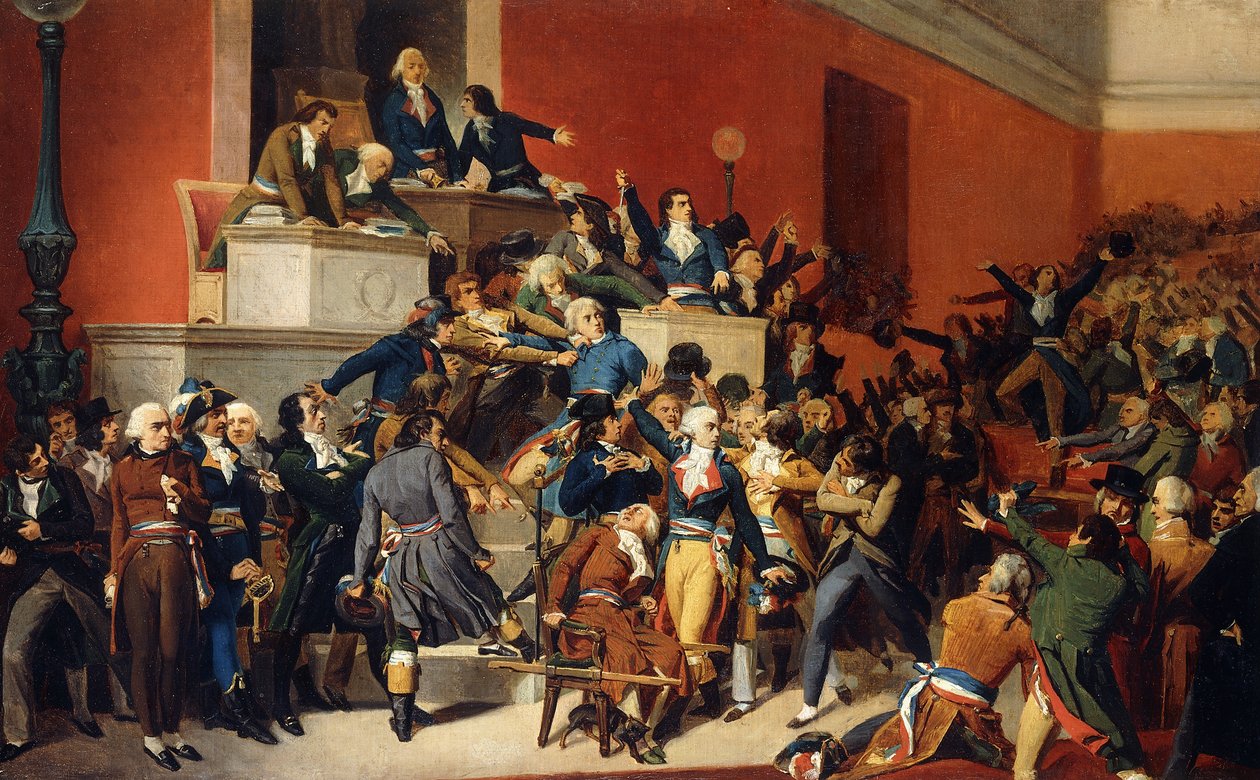|
Jean-Thomas-Élisabeth Richer De Sérizy
Jean-Thomas-Élisabeth Richer de Sérizy (1759–1803) was a French counter-revolutionary. He founded the newspaper '' l'Accusateur public''.Alain Moreau Les Métamorphoses du scribe: histoire du notariat français 1989 p195 "Les ennemis de la Révolution comptèrent dans leurs rangs un autre clerc de notaire, Richer-Sérizy (1759-1803). Arrêté en 1793, en raison de son amitié avec Desmoulins et libéré en 1794, il fonda un journal «l'Accusateur public»," Richer de Sérizy was born in Paris to a noble family, and died in London. He had contracted a marriage of convenience with Mlle Calame de La Prairie, daughter of an actress and the Prince de Conti. She accused him of being violent. Their divorce lasted about ten years, during which she had to pay him a pension. During the Revolution, an anonymous denunciation described him as a "man without morality, known throughout Paris for the depravity of his private life, for his passive antiphysical tastes, and marked by the most ... [...More Info...] [...Related Items...] OR: [Wikipedia] [Google] [Baidu] |
Counter-revolutionary
A counter-revolutionary or an anti-revolutionary is anyone who opposes or resists a revolution, particularly one who acts after a revolution has occurred, in order to try to overturn it or reverse its course, in full or in part. The adjective "counter-revolutionary" pertains to movements that would restore the state of affairs, or the principles, that prevailed during a pre-revolutionary era. Definition A counter-revolution is opposition or resistance to a revolutionary movement. It can refer to attempts to defeat a revolutionary movement before it takes power, as well as attempts to restore the old regime after a successful revolution. Europe France The word "counter-revolutionary" originally referred to thinkers who opposed themselves to the 1789 French Revolution, such as Joseph de Maistre, Louis de Bonald or, later, Charles Maurras, the founder of the '' Action Française'' monarchist movement. More recently, it has been used in France to describe political movements ... [...More Info...] [...Related Items...] OR: [Wikipedia] [Google] [Baidu] |
Prince De Conti
Prince of Conti (French: ''prince de Conti'') was a French noble title, assumed by a cadet branch of the princely house of Bourbon-Condé. History The title derives its name from Conty, a small town in northern France, c. 35 km southwest of Amiens, which came into the Bourbon-Condé family by the marriage of Louis de Bourbon, first Prince of Condé, with Eleanor de Roye in 1551. François de Bourbon (1558–1614), the third son of this marriage, was given the title of ''marquis de Conti'' and was later elevated to the rank of ''prince de Conti''. He died in 1614 and the title lapsed, since his only child had predeceased him in 1610. In 1629, the title of Prince of Conti was revived in favor of Armand de Bourbon (1629–1666), second son of Henry II, Prince of Condé, and brother of Louis, the ''Grand Condé''. During the time that the House of Bourbon ruled France, from the reign of King Henry IV of France to the reign of King Louis-Philippe of the French, the ... [...More Info...] [...Related Items...] OR: [Wikipedia] [Google] [Baidu] |
Carmes Prison
Saint-Joseph-des-Carmes (''Saint-Joseph-des-Carmes'') is a Catholic church located at 70 rue de Vaugirard in the 6th arrondissement of Paris. It was originally built as the chapel of a convent of the mendicant order of Discalced Carmelites. It is now the church of the Catholic Institute of Paris, a university-level seminary for training priests, and is also a parish church for the neighbourhood. It is dedicated to Saint Joseph, husband of the Virgin Mary. Built between 1613 and 1620, it combines elements of Classical architecture on the exterior with a remarkable display of Baroque architecture and art in the interior. The chapel is open to the public at limited hours. The site was a prison of the French Revolution, formed of a vast enclosure bounded by rue du Regard, rue du Cherche-Midi and rue Cassette - it was also bordered to the south by rue de Vaugirard. It was the site of one of the September Massacres in 1792 and features in the 1927 film ''Napoléon''. It was also th ... [...More Info...] [...Related Items...] OR: [Wikipedia] [Google] [Baidu] |
9 Thermidor
Maximilien Robespierre addressed the National Convention on 26 July 1794, was arrested the next day, and executed on 28 July. In his speech on 26 July, Robespierre spoke of the existence of internal enemies, conspirators, and calumniators, within the Convention and the governing Committees. He refused to name them, which alarmed the deputies who feared Robespierre was preparing another purge of the Convention, similar to previous ones during the Reign of Terror. On the following day, this tension in the Convention allowed Jean-Lambert Tallien, one of the conspirators whom Robespierre had in mind in his denunciation, to turn the Convention against Robespierre and decree his arrest. By the end of 28 July Robespierre was executed by guillotine in the Place de la Révolution. Robespierre's fall led to more moderate policies being implemented during the subsequent Thermidorian Reaction. Background Purge of the Hébertists and Dantonists On 27 July 1793, Robespierre was elected t ... [...More Info...] [...Related Items...] OR: [Wikipedia] [Google] [Baidu] |
13 Vendémiaire
13 Vendémiaire, Year 4 in the French Republican Calendar (5 October 1795 in the Gregorian calendar), was a battle between the French Revolutionary troops and Royalist forces in the streets of Paris. This battle was part of the establishing of a new form of government, the Directory, and it was a major factor in the rapid advancement of Republican General Napoleon Bonaparte's career. Background The social reforms of the French Revolution had been well received by the majority of the populace of France, but the Revolution's strongly anti-Catholic stance had created anti-Republican sympathies in many Roman Catholics. In March 1793, this sentiment boiled over into an armed insurrection in the fiercely Catholic Vendée region of western France. A rebel army titled ''Armée catholique et royale'' now proved to be a thorn in the side of the Revolutionary government in Paris, under leaders such as François de Charette de la Contrie and Maurice d'Elbée. The rebels were known a ... [...More Info...] [...Related Items...] OR: [Wikipedia] [Google] [Baidu] |
Coup Of 18 Fructidor
The Coup of 18 Fructidor, Year V (4 September 1797 in the French Republican Calendar), was a seizure of power in France by members of the French Directory, Directory, then forming the government of the First French Republic, with support from the military. The coup was provoked by the results of elections held months earlier, which had given the majority of seats in the country's Corps législatif (Legislative body) to Monarchism in France, royalist candidates, threatening a restoration of the House of Bourbon, monarchy and a return to the ancien régime. Three of the five members of the Directory, Paul François Jean Nicolas, vicomte de Barras, Paul Barras, Jean-François Rewbell and Louis Marie de La Révellière-Lépeaux, with support of foreign minister Charles Maurice de Talleyrand-Périgord,Bernard, pp. 193–194. staged the coup d'état that annulled many of the previous election's results and ousted the monarchists from the legislature. History Royalist candidates had gai ... [...More Info...] [...Related Items...] OR: [Wikipedia] [Google] [Baidu] |
Philippe Égalité
Philippe is a masculine given name, cognate to Philip, and sometimes also a surname. The name may refer to: * Philippe of Belgium (born 1960), King of the Belgians (2013–present) * Philippe (footballer) (born 2000), Brazilian footballer * Prince Philippe, Count of Flanders, father to Albert I of Belgium * Philippe d'Orléans (other), multiple people * Philippe A. Autexier (1954–1998), French music historian * Philippe Blain, French volleyball player and coach * Philippe Najib Boulos (1902–1979), Lebanese lawyer and politician * Philippe Broussard (born 1963), French journalist * Philippe Coutinho, Brazilian footballer * Philippe Daverio (1949–2020), Italian art historian * Philippe Djian (born 1949), French author * Philippe Dubuisson-Lebon, Canadian football player * Philippe Ginestet (born 1954), French billionaire businessman, founder of GiFi * Philippe Gilbert, Belgian bicycle racer * Philippe Noiret, French actor * Philippe Petit, French performer and tight ... [...More Info...] [...Related Items...] OR: [Wikipedia] [Google] [Baidu] |
Grace Elliott
Grace Dalrymple Elliott (c. 1754 – 16 May 1823) was a Scottish courtesan, writer and spy resident in Paris during the French Revolution. She was an eyewitness to events detailed in her memoirs, ''Journal of my life during the French Revolution (Ma Vie sous la Révolution)'' published posthumously in 1859. She was mistress, first to the future George IV, by whom she is said to have borne an illegitimate daughter, and then to the Duke of Orléans. Elliott trafficked correspondence and helped condemned Royalists and members of the French nobility escape from the First French Republic during the Reign of Terror. She was arrested several times but managed to avoid the guillotine, and was released following the military coup that ended the Terror and resulted in the execution of Robespierre. In the acclaimed but widely controversial 2001 film adaptation of her memoirs by French New Wave director Éric Rohmer as '' The Lady and the Duke'', Grace Elliot was played by English ac ... [...More Info...] [...Related Items...] OR: [Wikipedia] [Google] [Baidu] |
1759 Births
In Great Britain, this year was known as the '' Annus Mirabilis'', because of British victories in the Seven Years' War. Events January–March * January 6 – George Washington marries Martha Dandridge Custis. * January 11 – In Philadelphia, the first American life insurance company is incorporated. * January 13 – Távora affair: The Távora family is executed, following accusations of the attempted regicide of Joseph I of Portugal. * January 15 ** The British Museum opens at Montagu House in London after six years of development. **Voltaire's satire ''Candide'' is published simultaneously in five countries. * January 27 – Battle of Río Bueno: Spanish forces, led by Juan Antonio Garretón, defeat indigenous Huilliches of southern Chile. * February 12 – Ali II ibn Hussein becomes the new Ruler of Tunisia upon the death of his brother, Muhammad I ar-Rashid. Ali reigns for 23 years until his death in 1782. * February 16 – The ... [...More Info...] [...Related Items...] OR: [Wikipedia] [Google] [Baidu] |
1803 Deaths
Events January–March * January 1 – The first edition of Alexandre Balthazar Laurent Grimod de La Reynière's ''Almanach des gourmands'', the first guide to restaurant cooking, is published in Paris. * January 4 – William Symington demonstrates his '' Charlotte Dundas'', the "first practical steamboat", in Scotland. * January 30 – Monroe and Livingston sail for Paris to discuss, and possibly buy, New Orleans; they end up completing the Louisiana Purchase. * February 19 ** An Act of Mediation, issued by Napoleon Bonaparte, establishes the Swiss Confederation to replace the Helvetic Republic. Under the terms of the act, Graubünden, St. Gallen, Thurgau, the Ticino and Vaud become Swiss cantons. ** Ohio is admitted as the 17th U.S. state. * February 20 – Kandyan Wars: Kandy, Ceylon is taken by a British detachment. * February 21 – Edward Despard and six others are hanged and beheaded for plotting to assassinate King George III of the United Kingdom, and to ... [...More Info...] [...Related Items...] OR: [Wikipedia] [Google] [Baidu] |





